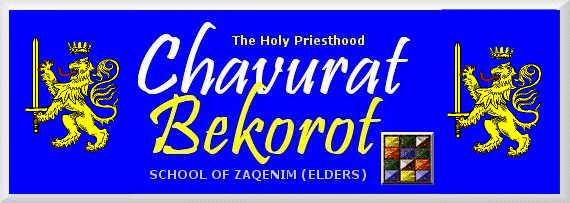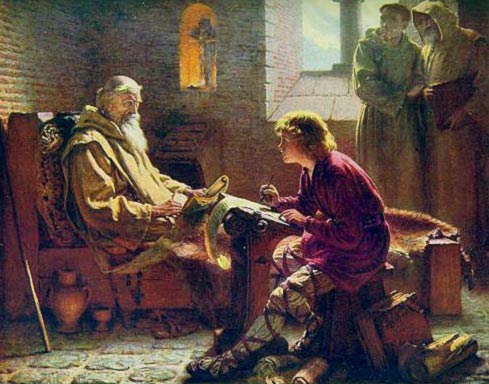
 12
JOHANNINE ESSAYS
12
JOHANNINE ESSAYS
 The Ruach haQodesh
The Ruach haQodesh
and Truth in 1 John
(8 January 1983)
by Christopher C. Warren, M.A.(Oxon)

Intro | 1 | 2 | 3 | 4 | 5 | 6 | 7 | 8 | 9 | 10 | 11
12 | 13 | 14 | 15 | 16 | 17 | 18 | 19 | 20 | 21
The Ruach haQodesh (Holy Spirit) is a difficult phenomenon to accurately define particularly as it [1] belongs to the realm of experience and is not particularly susceptible to critical analysis. However, we can perhaps learn what the people of John's day understood by it in conjunction with the general understanding of the word 'spirit' as used by the Hebrews.
In the Old Testament the Ruach Elohim (Spirit of God) (Heb. ruach = breath, wind) was regarded as His powerful energy which could enable man to do what was normally beyond their power as, for example, in the stories of Gideon (Judg.6:34) and Samuel (1 Sam.10:6,10). In the Book of Joel, the presence of this Ruach (Spirit) was regarded as proof that the promised last day was on the brink of appearing, for such special divine activity would be one of its marks (Joel 2:28ff; Ac.2:1ff). Some of the manifestations of the Ruach (Spirit) were considered to be dreams, visions, and prophetic utterance. In the New Testament periog the Ruach Elohim (Gk. Pneumos = wind, breath) was considered, in general, to enable believers to speak, whether in prayer to Yahweh (Rom.8:14ff), or in court (Mk.13:9ff), or in preaching and other Christian discourses (Ac.2; 1 Cor.2:14).
But by the time of the First Epistle of John there was a concern that not everything that seemed to flow from Ruach (Spirit)-inspired utterance was genuine. There was therefore a danger that (1) false doctrine might appear through false spirit-like utterances, or (2) there would be so much fear that the people could not distinguish between true and false spirit-utterance that the gifts of the Ruach (Spirit) might be denied altogether. The purpose of 1 John 4 is to distinguish clearly between the true and false spirits by giving easily understood keys to the ordinary believer. We need to remember that this was a time in the early Messianic Community (Church) when many heresies were gradually gaining the upper hand (such as Gnosticism) that claimed Ruach (Spirit)-guided utterance (i,e, revelation from Yahweh).
1 John 4 clearly shows us how to recognise the true Ruach (Spirit): the Ruach haQodesh (Holy Spirit) will tell the believer that Yah'shua the Messiah (Jesus Christ) has come in the flesh. This is 1 John's major contribution to our understanding of the Ruach haQodesh (Holy Spirit), for many people claimed in John's day that Yah'shua the Messiah (Jesus Christ) never came to the earth at all in human form but that He was a phantom. Such a belief naturally meant that Christ had not died on the cross and that no atonement had been made. This "spirit" John called the "spirit of Antichrist", "spirit of the False Messiah" (in Aramaic) or the "spirit of error" (1 Jn.4:1-6).

It is also important to note that the Ruach YHWH (Spirit of the Lord) goes under various names or titles in the New Testament. 1 John calls it the Ruach Elohim (Spirit of God - 1 Jn.4:2) whereas in John's Gospel is is known either as the Ruach haQodesh (Holy Spirit - Jn.14:17; 15:26; 16:13; 4:23ff) or the Paraclete (Comforter, Counsellor). Both of these were alternate expressions to the Spirit of Truth. John's Gospel links the Ruach haQodesh (Holy Spirit) / Paraclete (Comforter, Counsellor) with Christ whereas 1 John links the Ruach (Spirit) with Elohim (God the Father or Godhead). Thus 1 John shows that the Ruach haQodesh (Holy Spirit) is both the witness of the Son and the Father, the Apostle writing from a more theocentric point-of-view in 1 John than in the Gospel which is distinctively christocentric.
A final qualification is given the Ruach (Spirit) by John in 1 John 8 for here the Ruach haQodesh (Holy Spirit) is a witness to the fact that Christ came by water and by blood (i.e. baptism and atonement). But in the broader sense the Ruach (Spirit) is a witness to all that is truth and hence its title the "Spirit of Truth"! (1 Jn.5:7; see Ps.119:142,151). John here uses the Ruach (Spirit) in the Old Testament in which two or three witnesses were needed to establish the truth of a matter. Here Christ has three witnesses to the veracity and authenticity of His mission and purpose: the Ruach haQodesh (Holy Spirit), the water (baptism), and the blood (atonement) (1 Jn.5:8).
This leads on quite naturally to John's contribution to our understanding of the nature of truth. Truth, in the context of the epistle, can only be known through the Ruach haQodesh (Holy Spirit) [2]. In the early part of 1 John, John spends some time expounding the nature of "truth" (Gk. alétheia). In 1 John 1:6 the exhortation is that the believers "act according to the truth", or literally rendered, "behave with integrity", which is very Jewish in flavour. Truth is contrasted with falsehood often, and often falsehood with false doctrine or teaching. Truth is a very philosophical, abstract word, as we know from Pilate's famous remark to Yah'shua (Jesus): "What is truth?" (Jn.18:13) 1 John's major contribution to our understanding of the Ruach haQodesh (Holy Spirit) and Truth is that they are expressions of each other and therefore basically subjective, with certain qualifications.
[1] The Ruach (Spirit) is herein, for convenience, rendered as a neutral ('it') force. In actual fact, the Ruach is female ('She') in Hebrew, as is made plain in the Hebrew and Aramaic versions of the Johannine writings.
[2] In the primary, direct, spiritual sense, though it may be known in the secondary, indirect, intellectual sense through Torah and the scriptures in general. Each always bears testimony of the other.
Intro | 1 | 2 | 3 | 4 | 5 | 6 | 7 | 8 | 9 | 10 | 11
12 | 13 | 14 | 15 | 16 | 17 | 18 | 19 | 20 | 21


This page was created on 9 February 2004
Updated on 9 February 2004
Copyright © 1987-2008 NCCG - All Rights Reserved



